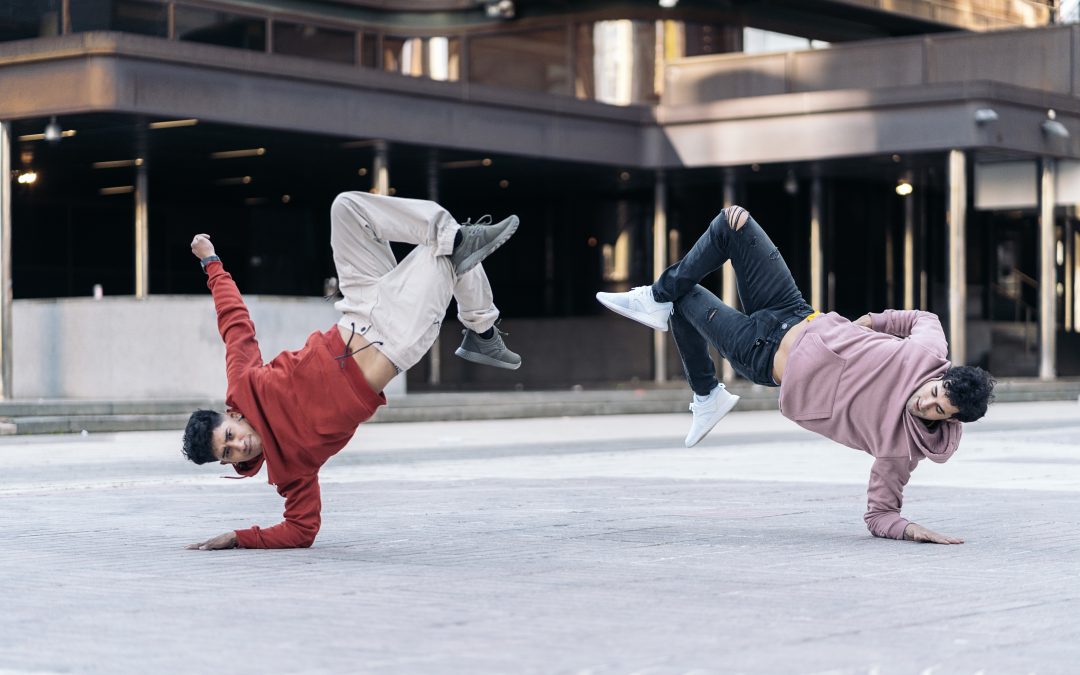Breakdancing, also known as breaking, will be making its debut as an Olympic sport in the 2024 Paris Games. This exciting addition to the Olympic lineup has generated a lot of buzz, and fans are eager to learn more about what to expect. Let’s explore the rules and judging criteria for Olympic breakdancing. Then you will be prepared to cheer on your favorite b-boys and b-girls.
The judging criteria for breakdancing competitions.
Breakdancing competitions are judged based on a set of criteria that evaluate the technical skill, creativity, and musicality of the dancers. The judges will be looking for a variety of moves, including power moves, freezes, and footwork, as well as the ability to transition
.
In the world of competitive breaking, a battle’s outcome is determined by a minimum of three or more judges, ensuring a fair and comprehensive evaluation. These judges assess the dancers’ performances based on six key criteria: creativity, personality, technique, variety, performativity, and musicality. Each criterion carries a different weightage in the final score, with technique, performativity, and creativity accounting for 60% of the total, while variety, musicality, and personality make up the remaining 40%.
Throughout the battle, the judges carefully observe and analyze the dancers’ skills, style, and overall presentation. After each round, the judges submit their votes, considering how well the participants embody the essential aspects of breaking. The breaker who accumulates the highest points according to the judges’ evaluations is declared the winner, showcasing their mastery of the art form and their ability to captivate the audience and judges alike.
During the 2018 Youth Olympics, a panel of five judges was responsible for evaluating and determining the outcomes of the battles. This esteemed group of experts brought their wealth of knowledge and experience to the table, ensuring that the performances were assessed with precision and accuracy, ultimately awarding the deserving breakers for their exceptional talent and dedication to their craft.
How to Qualify for Breaking at the 2024 Paris Olympics
This groundbreaking competition will see a total of 32 talented athletes, 16 B-Boys and 16 B-Girls, competing for the very first medals in breaking.
To ensure fair representation, there will be a maximum of four athletes per National Olympic Committee (NOC), with two athletes per gender. The host country, France has already secured two spots. Additionally, the Tripartite Commission will allocate four Universality places, two for each gender. To be eligible for a Universality place, athletes must participate in the Olympic Qualifier Series and finish within the top 32 in the final ranking.
With 26 quota places still available, the qualification period will be an exciting time for athletes vying for their spots. It’s important to note that specific eligibility criteria must be met. Among other requirements, B-Boys and B-Girls must have been born on or before December 31, 2008, to be eligible to compete.
Athletes will have three main opportunities to secure their slots for the debut of breaking at the Paris 2024 Olympics. The highly anticipated 2023 World Championship, taking place in Belgium on September 23-24, 2023, will determine the first two qualifiers, one per gender. These champions will make history as the initial representatives of Olympic breaking.
Furthermore, a total of 10 athletes, five per gender, will obtain their quotas through the Continental Games or Continental Championships held within their respective regions. This approach ensures diverse participation and adds to the global appeal of breaking.
As we eagerly anticipate the Games, it’s clear that breaking’s inclusion in the Olympic program is a significant milestone for the sport. The energy, creativity, and skill displayed by these athletes will captivate audiences worldwide. As an expert in the field, I’m excited to witness the remarkable performances and witness the sport’s growth on the Olympic stage.

